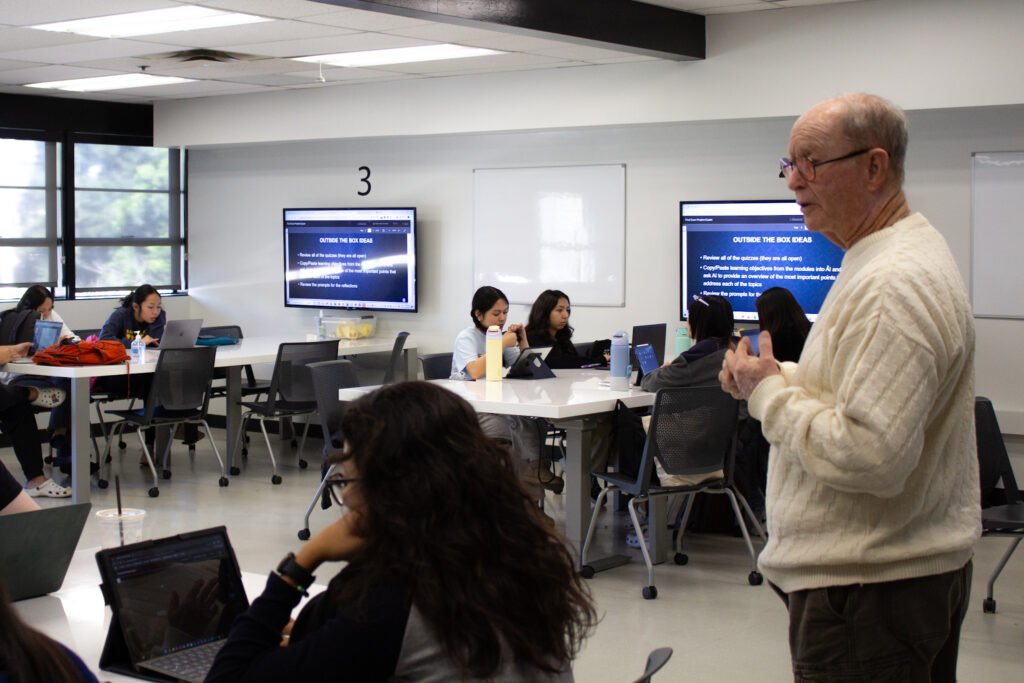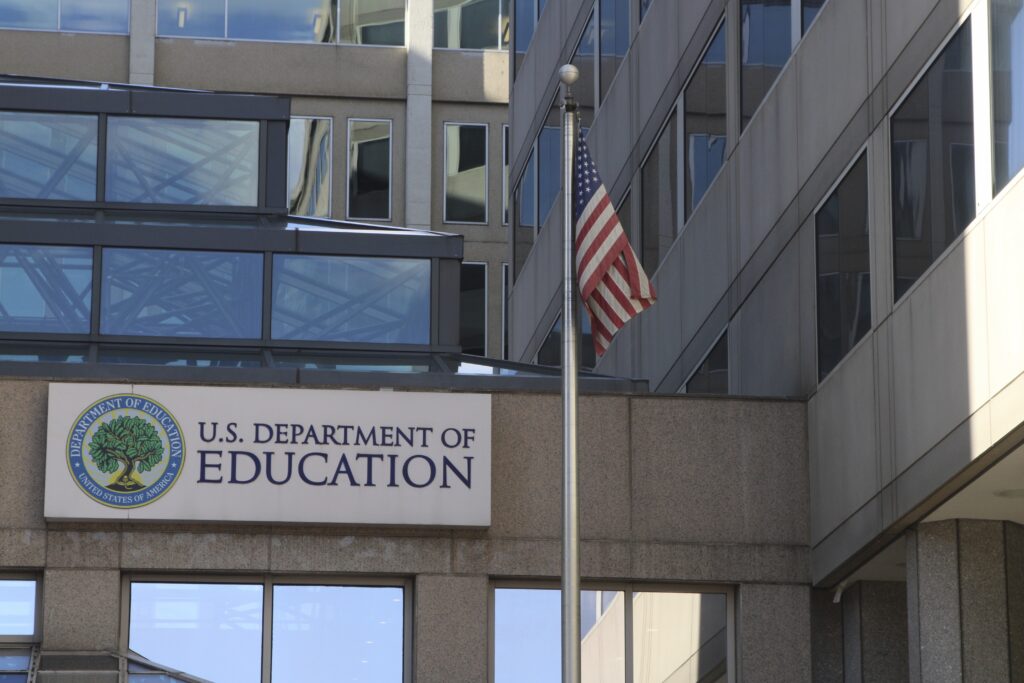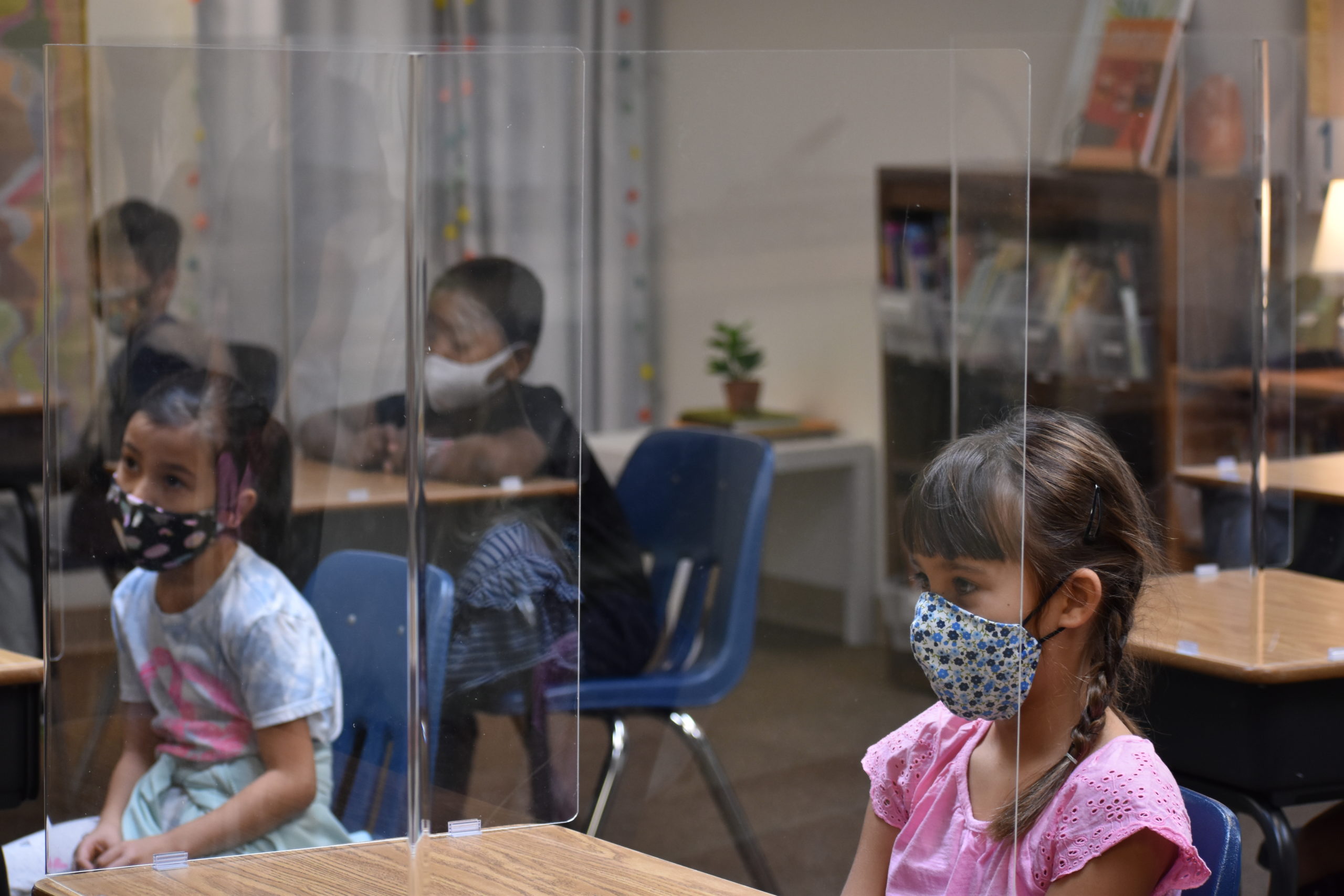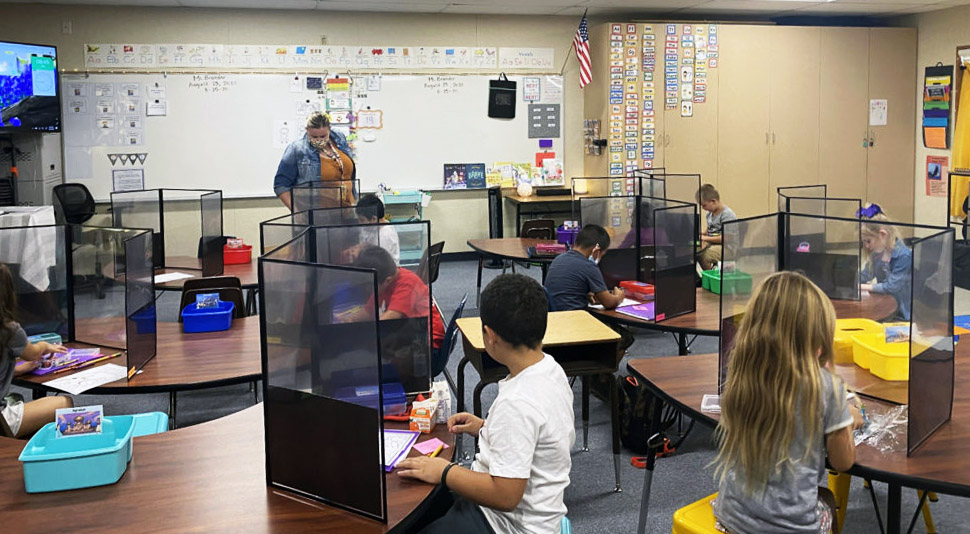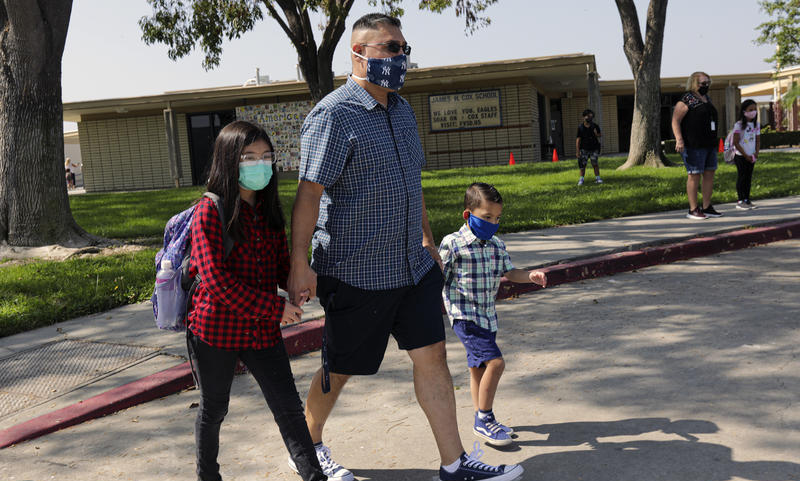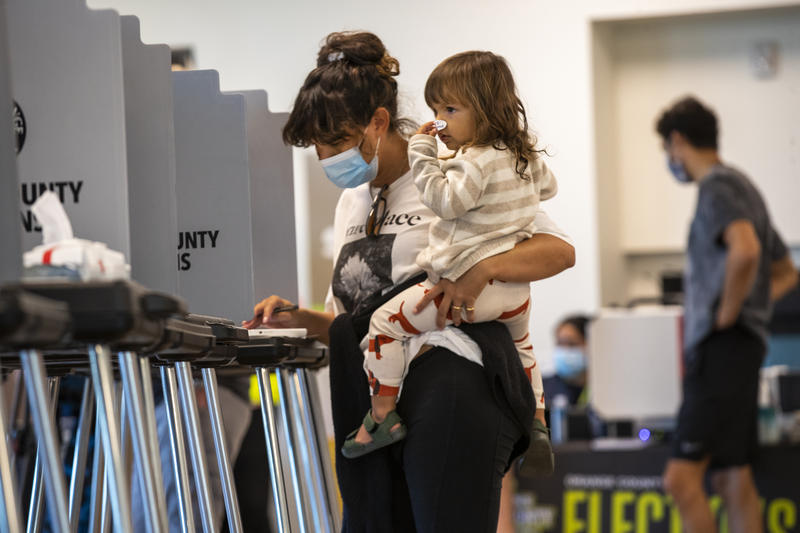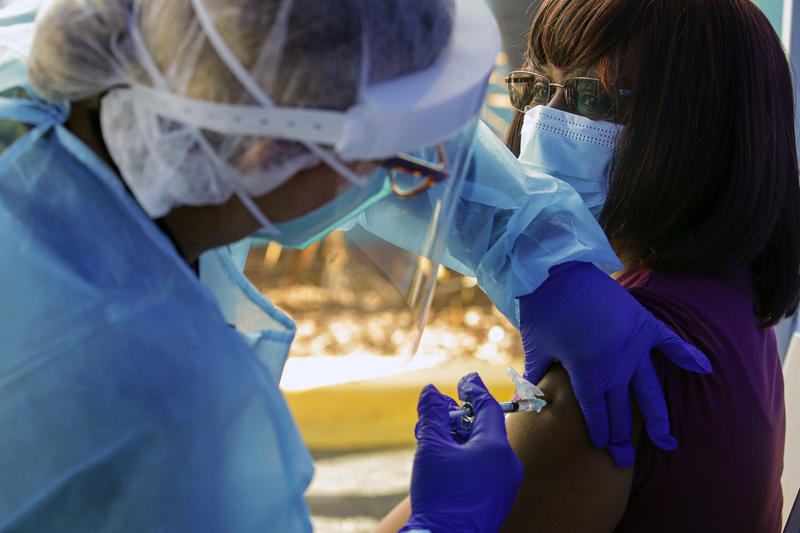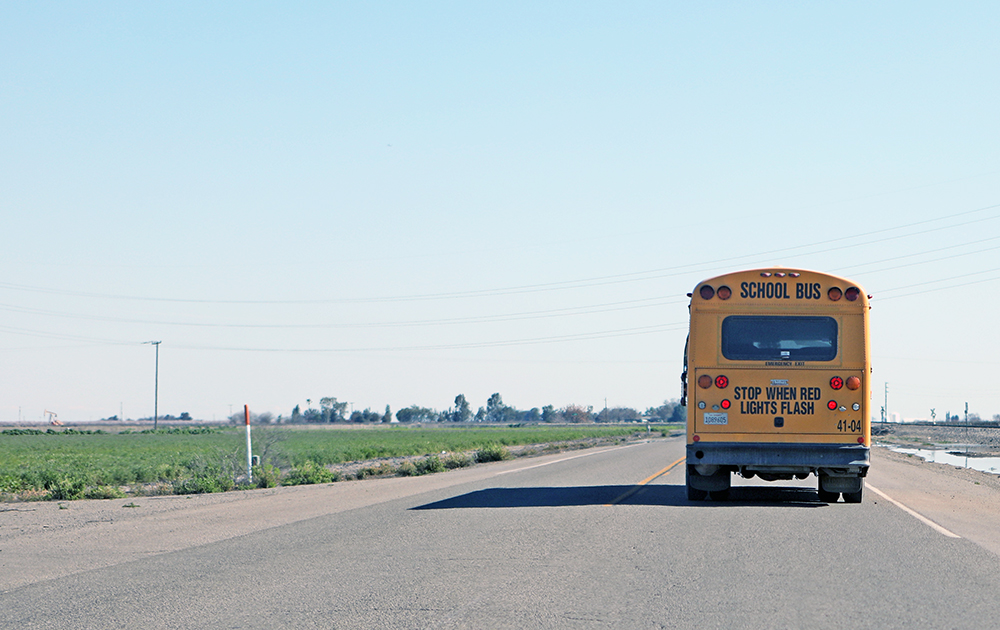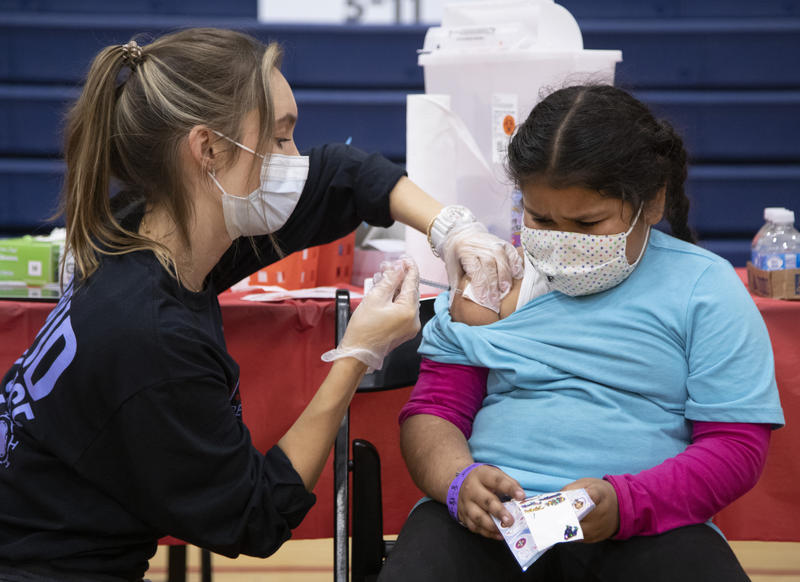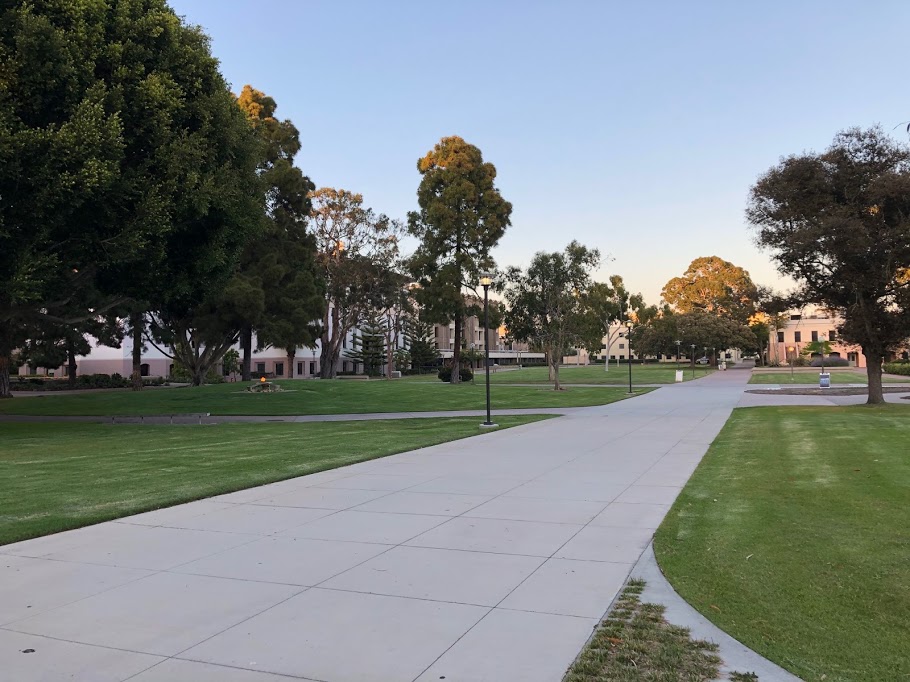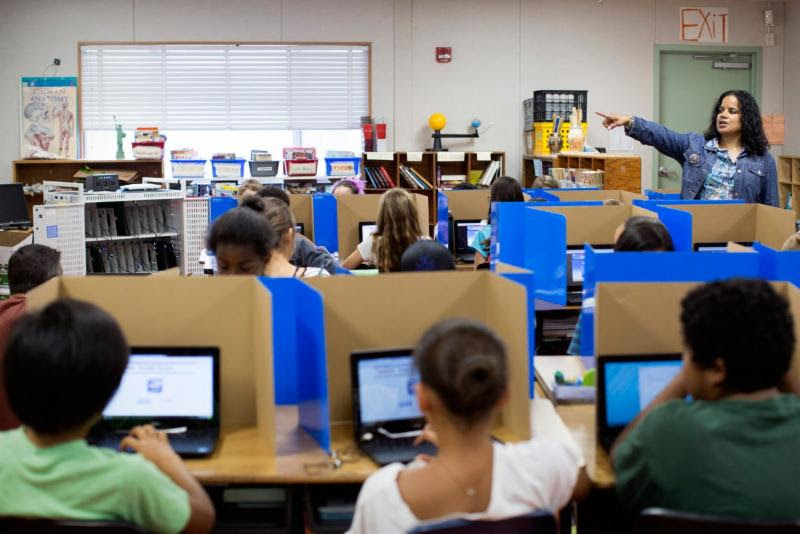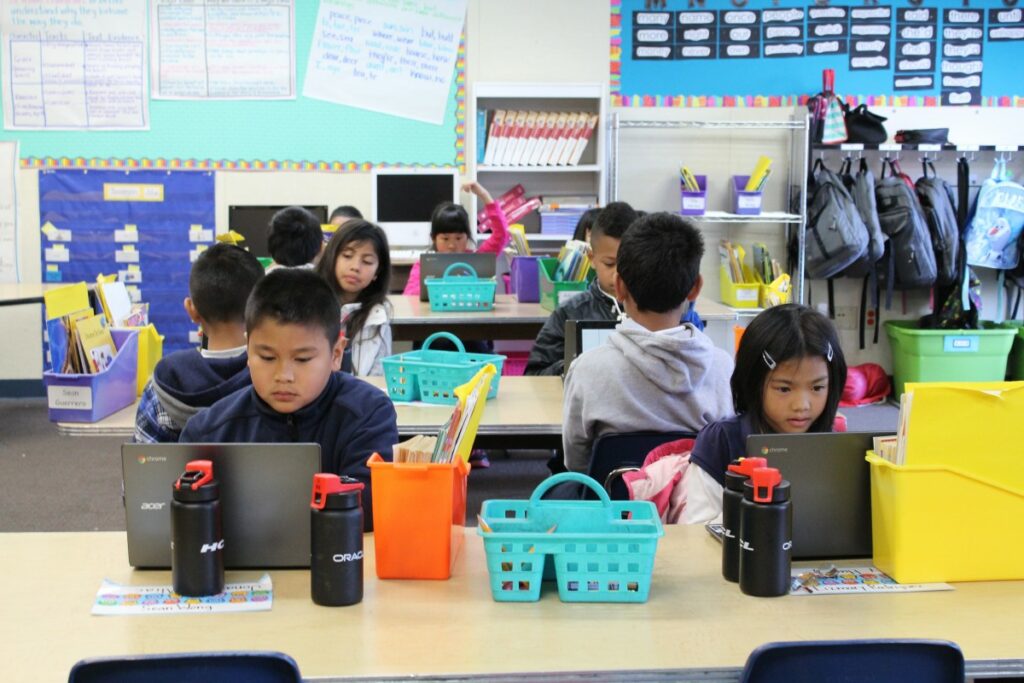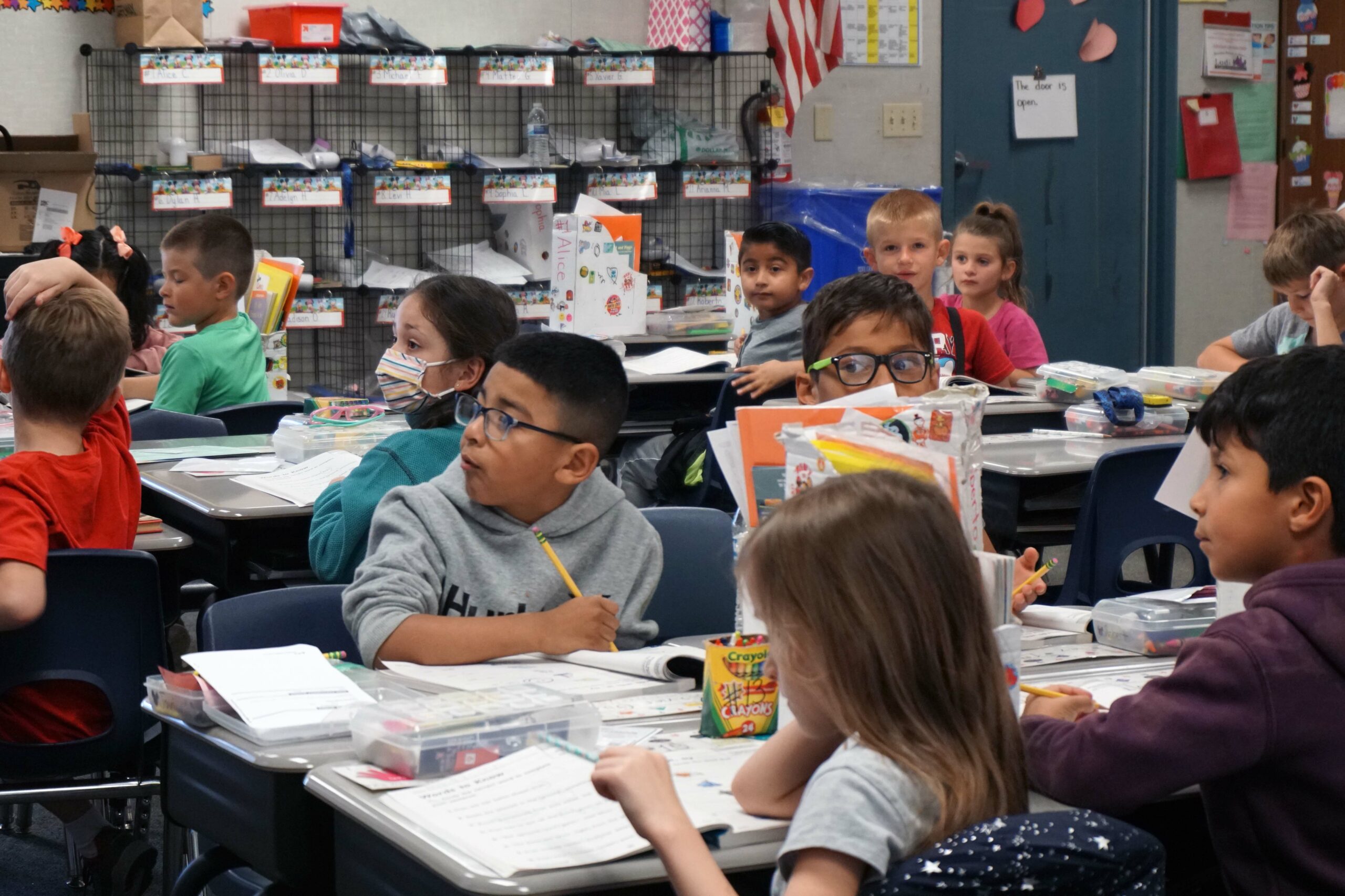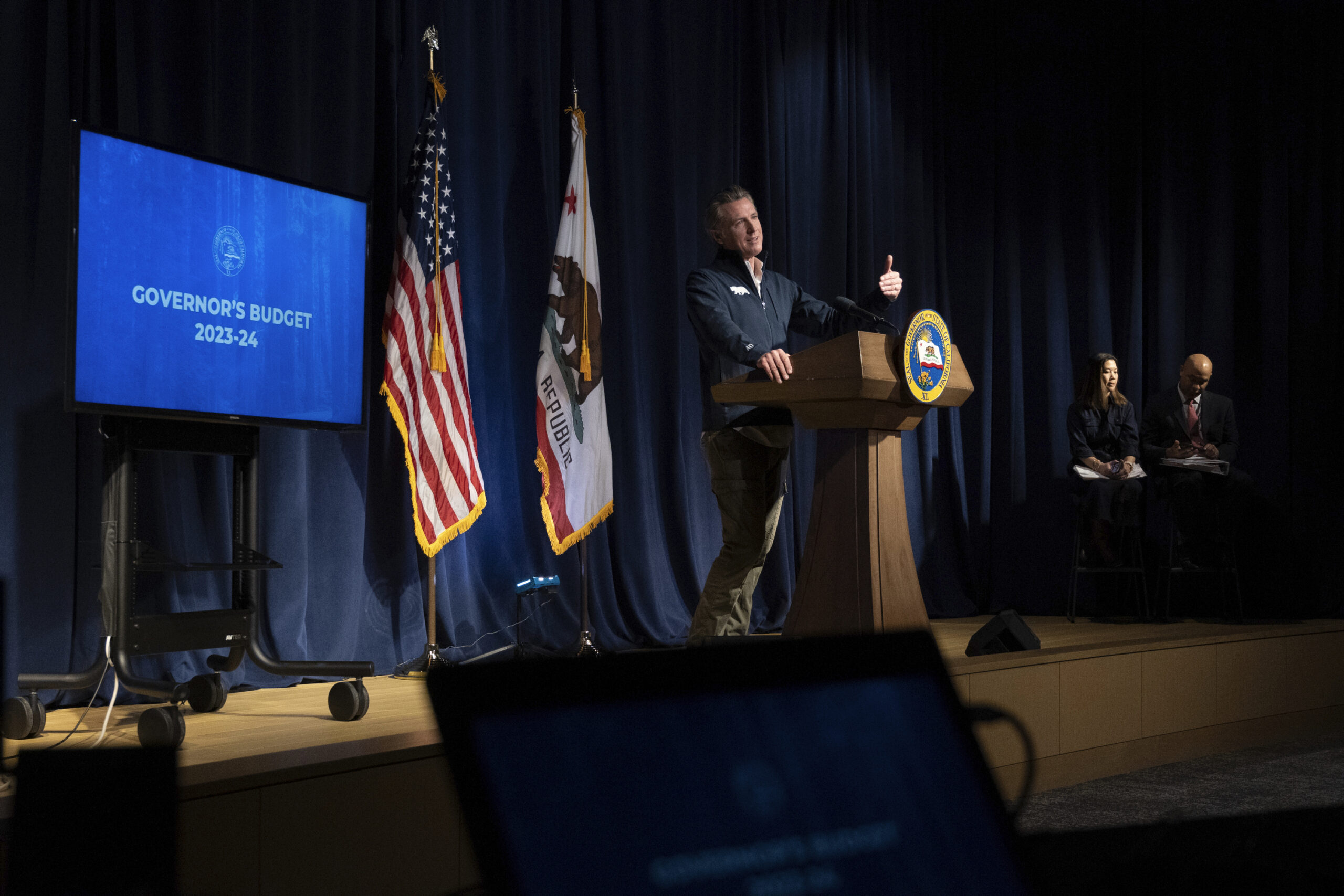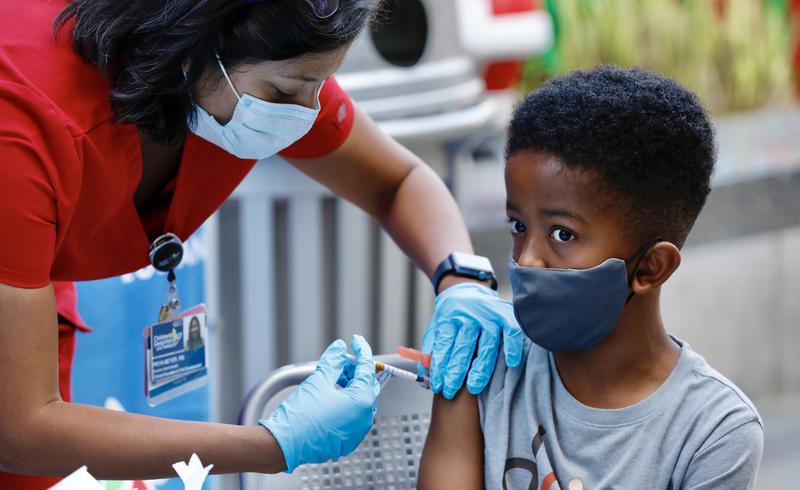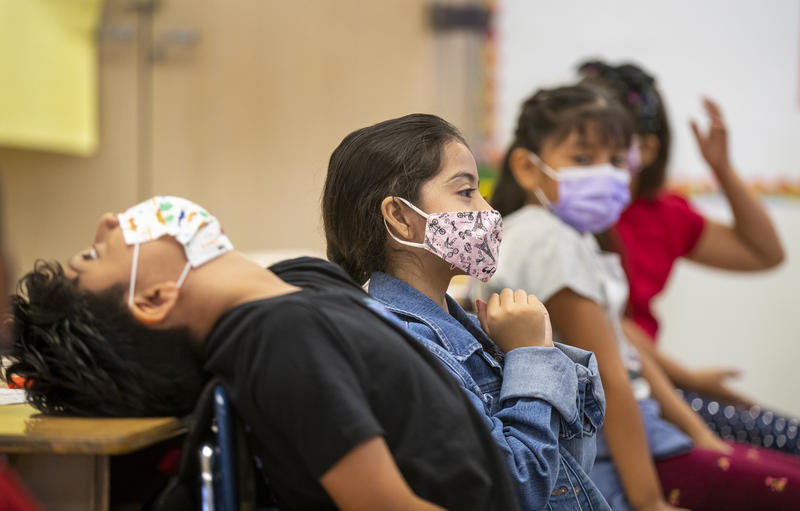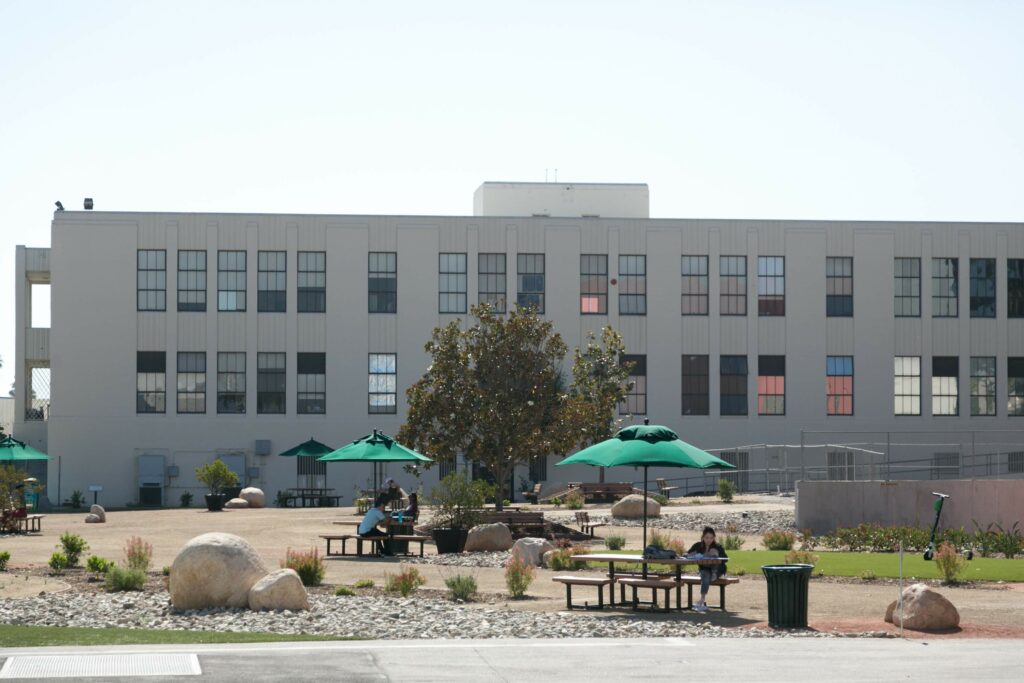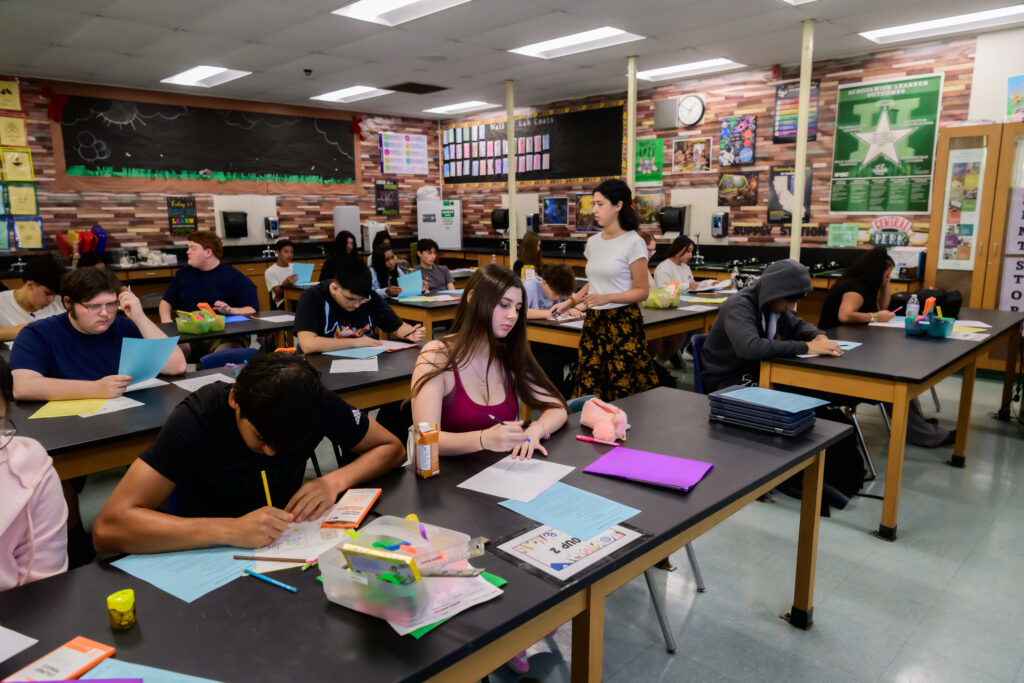
A California Indian Nations College flag inside the college’s classroom at College of the Desert’s Palm Springs campus.
Michael Burke/EdSource
After operating for the last six years as an affiliate of a nearby community college, California Indian Nations College (CINC) appears likely to become the state’s only standalone, fully accredited tribal college. It’s something education experts say would be a boon for Native American students who now start and complete college at lower rates than other ethnic groups.
But first, money has to be found to ensure the college can survive, let alone expand and build its own campus.
A two-year and mostly online institution based in the Coachella Valley in Riverside County, the college achieved a big step forward toward its goals recently. It got preliminary approval for accreditation, allowing it to independently offer classes and transferable credits and distribute financial aid. The college expects to have full accreditation within the next year.
The college opened its doors in fall 2018 as an extension of UC Riverside for one semester. Since 2019, its degrees have been awarded via a partnership with College of the Desert. Students dually enroll at both campuses, though starting next semester students will be able to enroll solely at CINC and still get an accredited degree.
College of the Desert also provides classroom space for the tribal college at its temporary Palm Springs campus, made up of a set of trailers. Inside the tribal college’s classroom trailer, visitors can find Native crafts such as dream catchers, fliers with information about transferring to four-year colleges and even a makeshift basic needs center — a filing cabinet with dry food.

CINC enrolls about 150 students and is planning for many more, but it faces an uncertain future even if it achieves full accreditation. It is running low on money and is asking the state for a $60 million infusion in this year’s budget: $50 million to build its own campus and another $10 million in annual funding for operational costs.
Officials say the money is necessary for the college to grow long term and offer a culturally relevant education to Native students who often distrust the U.S. education system. That distrust dates back to the 19th century, when the government began to forcibly send Native children to boarding schools intended to assimilate them, a practice that didn’t end until the late 1960s.
“There’s so many of us here who feel a void and think, ‘Who are we?’ So having an institution that’s empowering and teaching us the truth about who we are is really important,” said Mayra Grajeda Nelson, who graduated last year from CINC with an associate degree in sociology and another in social and behavioral sciences. Originally from Banning, Grajeda Nelson now works as a health educator for the Indian Health Council in northern San Diego County.
The college is not a typical community college governed by the state’s board of governors; instead, even with state funding, it would remain chartered by the Twenty-Nine Palms Band of Mission Indians, a federally recognized tribe in Southern California.
It would be the only accredited tribal college in the state but not the first. D-Q University operated in Davis from the early 1970s until closing in 2005 after losing accreditation and eligibility for $1 million in federal funding. Across the country, there are more than 30 accredited tribal colleges and universities, spread out across the Southwest, Midwest and other regions. The first tribally controlled college, Diné College in Arizona, was established in 1968 and still operates.
California has the largest Native population of any state, with a concentration of tribes in the desert regions of Riverside County. Yet, American Indian or Alaska Native individuals have the lowest college-going rate of any racial or ethnic group in the state, according to a report published in December by the California Indian Culture and Sovereignty Center at Cal State San Marcos.
“But if you look at American Indian students who go to tribal colleges or universities, they’re four times more likely to earn their bachelor’s degree,” said Shawn Ragan, CINC’s chief operations officer.
In a recent report following a campus visit, the accrediting commission praised the tribal college for providing “culturally sensitive, academically rigorous” courses and degrees that incorporate Native American culture and for “fostering an environment where both Indigenous and non-Native students can thrive.” The report found that CINC has “solid financial planning in place for the short-range” and noted that the college is still figuring out its long-term funding planning. Otherwise, the commission found only minor problems that college leaders say will be easy to address, such as requiring the college’s board of trustees to undergo a self-evaluation.
California lawmakers, though, have not committed to providing funding this year for CINC, and no funding was included in Gov. Gavin Newsom’s January budget proposal.
Assemblymember David Alvarez, chair of the state Assembly’s budget subcommittee on education, said in an interview that he’s supportive of the tribal college and that there is “room for conversation” about funding. But he acknowledged that the timing is not ideal: California’s public universities are facing budget cuts, and it could be difficult to find money for new spending.
To date, the state has given CINC $5 million — a one-time funding allocation in 2022 to help the college apply for accreditation.
Now that the Accrediting Commission for Community and Junior Colleges has awarded the college candidacy status, CINC can also apply for federal funding, but that too is an uncertainty under the Trump administration. President Donald Trump recently rescinded a White House initiative aimed at strengthening tribal colleges. His proposed federal funding freeze, currently blocked by the courts, would also prevent the colleges from getting federal grants and contracts. The Trump administration’s hostility to any programs promoting racial diversity could also have a chilling effect and make it harder for those colleges to secure funding.
CINC previously received $9 million in seed money from the Twenty-Nine Palms Band of Mission Indians. Most of that has been spent, and the college is now surviving off its reserves, which should last for at least the next year.
Open to both Native and non-Native students, the college mostly uses part-time faculty and offers associate degrees in sociology and liberal arts. Students in the liberal arts program can pick one of three concentrations: arts and humanities, business and technology or social and behavioral sciences.

In addition to courses specific to their major, students are required to take general education classes as well as six units for a Native American breadth requirement. For that requirement, they choose between courses such as Native American literature, Native performing arts and Native languages.
Most classes are online, but the college often holds in-person events, including cultural workshops like basket weaving. There are also talking circles, an Indigenous practice similar to group therapy. Many of the events are led by Kim Marcus, the college’s Elder in Residence and an enrolled Tribal Elder with the Santa Rosa Band of Cahuilla Indians.
Grajeda Nelson, the recent graduate, enrolled at CINC in 2023, more than a decade after first enrolling in college at Crafton Hills College in Yucaipa. She also attended Mount San Jacinto College, but didn’t receive a degree from either institution.
With some credits carrying over from her previous stops, she was able to finish two associate degrees within one year at CINC. During that time, she found the talking circles especially helpful to share her past challenges and get support from people with similar experiences.
“That’s how the Native community is. There’s that closeness and support because we’re all kind of dealing with very similar challenges, especially with intergenerational trauma, substance usage, depression, poverty,” she said. “So having that space gives us time to process those emotions so we don’t have to walk away and feel that grief.”
Kristina Glass, whose family is part of the Cherokee Nation, did make it to and through a non-tribal college, having graduated from Cal State Long Beach in 2014 with a bachelor’s degree in psychology.
In debt and laid off from her job as a graphic designer, Glass last year decided to return to college. She’s pursuing an associate degree in Spanish language from College of the Desert and has been taking general education classes at CINC, including Native American literature.
As a student at Cal State Long Beach, Glass said she felt isolated because she didn’t meet any other Native students. Her experience at CINC has been much better. Just hearing Native American blessings, performed before events on campus, regularly brings her to tears. “It’s special, because you feel that connection to this land and these people,” she said.
Faculty try to incorporate elements of Native culture into the curriculum, even in courses that aren’t part of the Native breadth requirement. Roseanne Rosenthal, an anthropology professor, instructs students to learn about the history of their tribes from elders in their communities.
“Having students going back and bringing that knowledge into the classroom, I think is great,” said Rosenthal, the college’s only full-time faculty member.
If the college can secure more funding, officials plan to add additional full-time faculty and new associate degrees including in business, engineering and food sovereignty.
At the top of their wish list, though, is their own campus, which would take a few years to build. In the meantime, the college will continue to use the College of the Desert facility and UC Riverside’s Palm Desert campus, where CINC’s administration is housed.
Ragan said the college is still looking at potential sites for a permanent campus but expects to stay in Riverside County. He said having a campus would “enable students to come together and build community” by having more in-person events and classes and would allow the college to offer more vocational training.
He added that the college is looking into additional funding possibilities, such as from other tribes, but said the state “is the best option right now.”
“What we’re asking for, it’s not a large amount. So ideally we’ll have some wiggle room and can get us added to the budget,” he said. “California has a tremendous need for tribal colleges. What we’re doing is historic and is going to change lives.”






